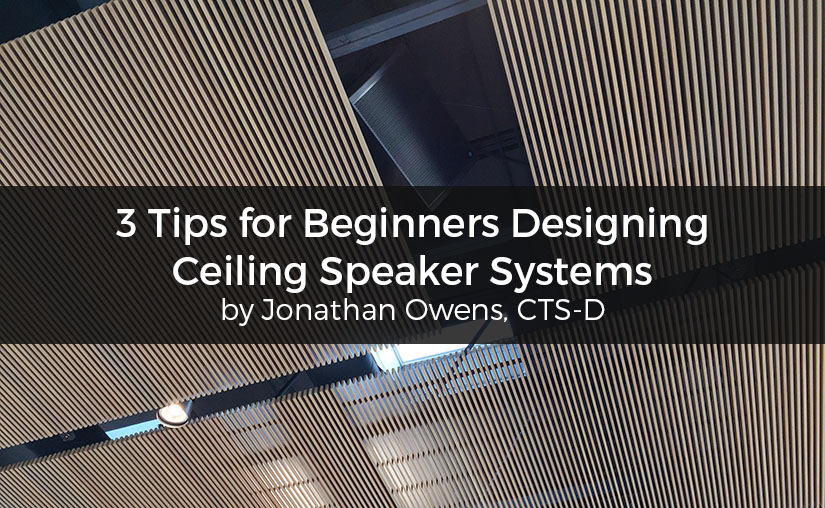Size, depth, sensitivity, coverage pattern, and frequency response all help determine the sonic make-up of in-ceiling speaker systems. So how do we determine which speaker is right for a space? As an audiovisual/multimedia designer, I’d like to share 3 tips to consider when designing a 70-100v ceiling speaker system. I hope this proves useful to those starting out, or for anyone looking for another perspective to help improve your own designs.
1. The room and application matter: Do not assume any ceiling speaker will do. Choosing a cheap speaker to fit your budget may result in sub-par performance and a negative impression of the space. Just being able to “hear” the audio is not enough. We need to be able to “understand” what is being said. The room and application are critical criteria for designing a system to maximize speech intelligibility. For example, a conference room with glass walls may benefit from a more directional loudspeaker that keeps the speakers away from the walls. This can help minimize early reflections off the glass that can negatively impact the phase and intelligibility of the direct sound. This may also mean that a more expensive speaker is needed to achieve the specs required. On the other hand, a hotel corridor being used for background music (BGM) may not require expensive speakers since the goal is to have music filling the space with ambience.
2. Don’t skip the math: It’s important to do the math and not “eyeball” speaker quantity and placement. Properly designing an in-ceiling speaker system is not rocket science, but it does require some math to properly calculate speaker power, and coverage. A designer should consider the height of the ceiling, angle of coverage for the speaker, listener ear height, and intended use for the space. For example, if you are given a 100W amplifier and need to figure out how much power to send to each speaker; one might divide the wattage by the quantity of speakers, but this is a mistake. Not only does this neglect the headroom, but usually results in overpowering the speakers. If 7.5W per speaker is sufficient for the space, then don’t tap them at 15W just because the amplifier has the available power. The speakers will then be over powered for the desired target dBSPL, and additional gain stage adjustments may be needed to bring the level back down to the target range.
3. Don’t Assume: This tip is just a guideline in general, but it’s dangerous to assume when designing speaker systems. You may think that a small conference room is a simple design and you can pick out the cheapest speakers and place 4 in the ceiling evenly spaced. But if you haven’t done the proper investigating, even that simple system can fail. When specifying a ceiling speaker, it is critical to make sure that the details are considered and noted. This includes color, depth of the ceiling, plenum rated back can, and safety tie. Don’t get into a situation where a ceiling speaker is specified, only to find out into construction that there is not enough depth above the ceiling. In these instances, you may have to consider a shallow speaker, but even the shallow speakers may not be shallow enough. These may seem like little things that are common sense, but it’s surprising how often these are overlooked and end up causing issues. So, it’s best to try and avoid these by doing the homework to check.
Also published in SCN Magazine




